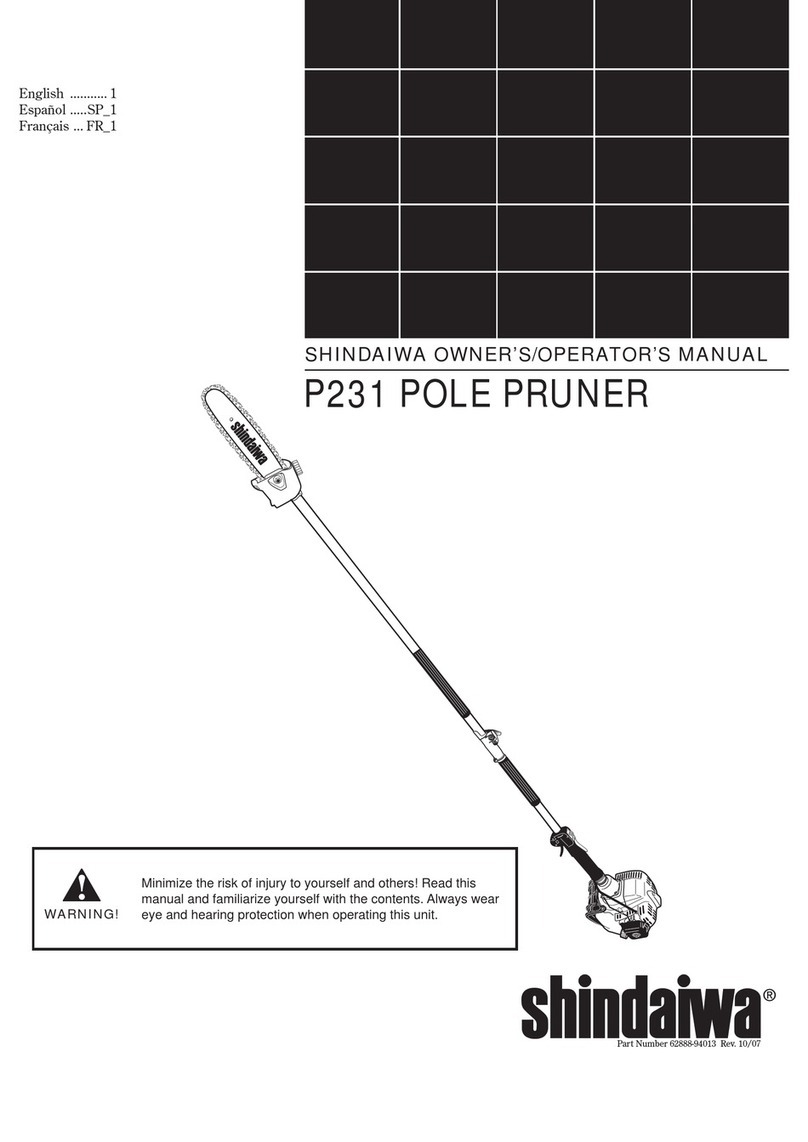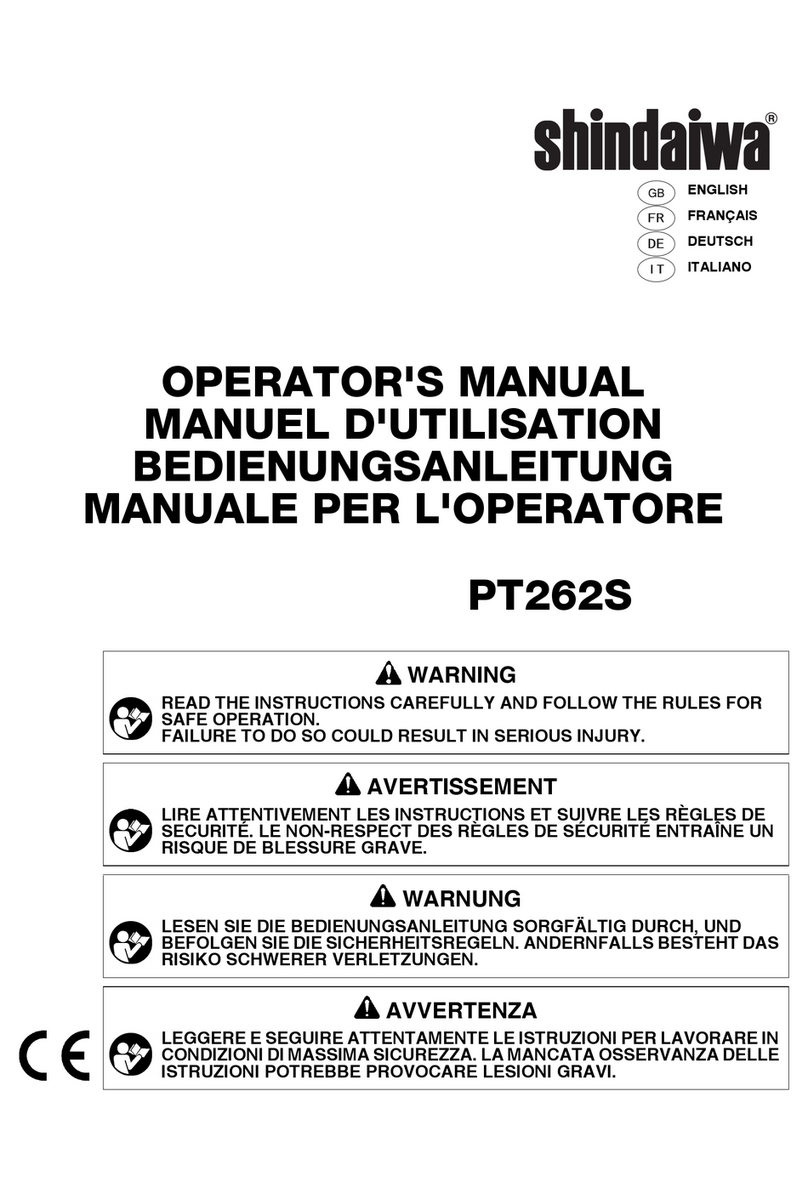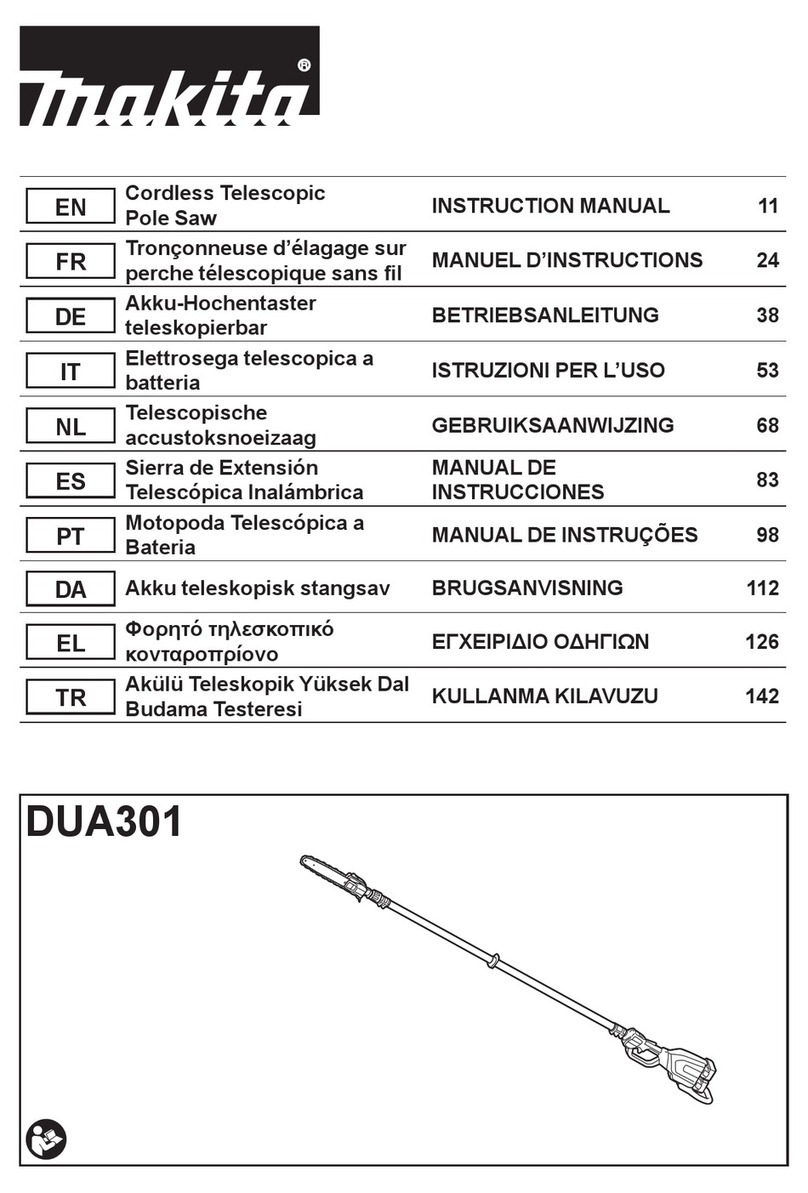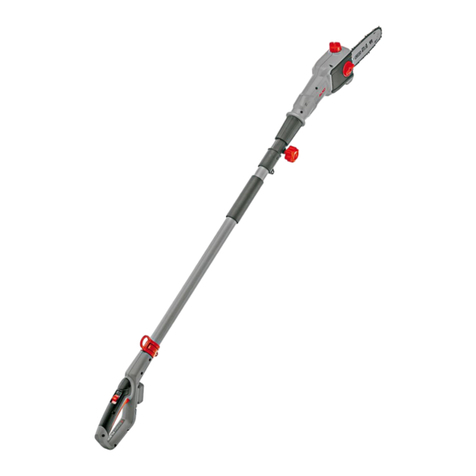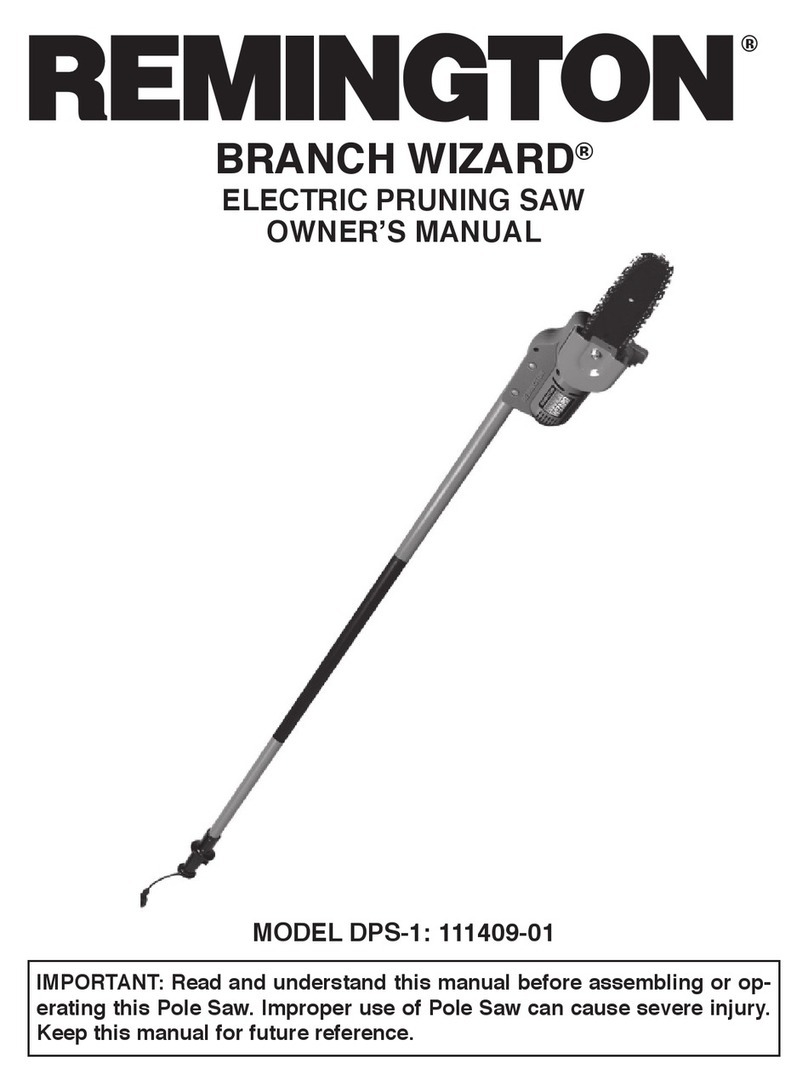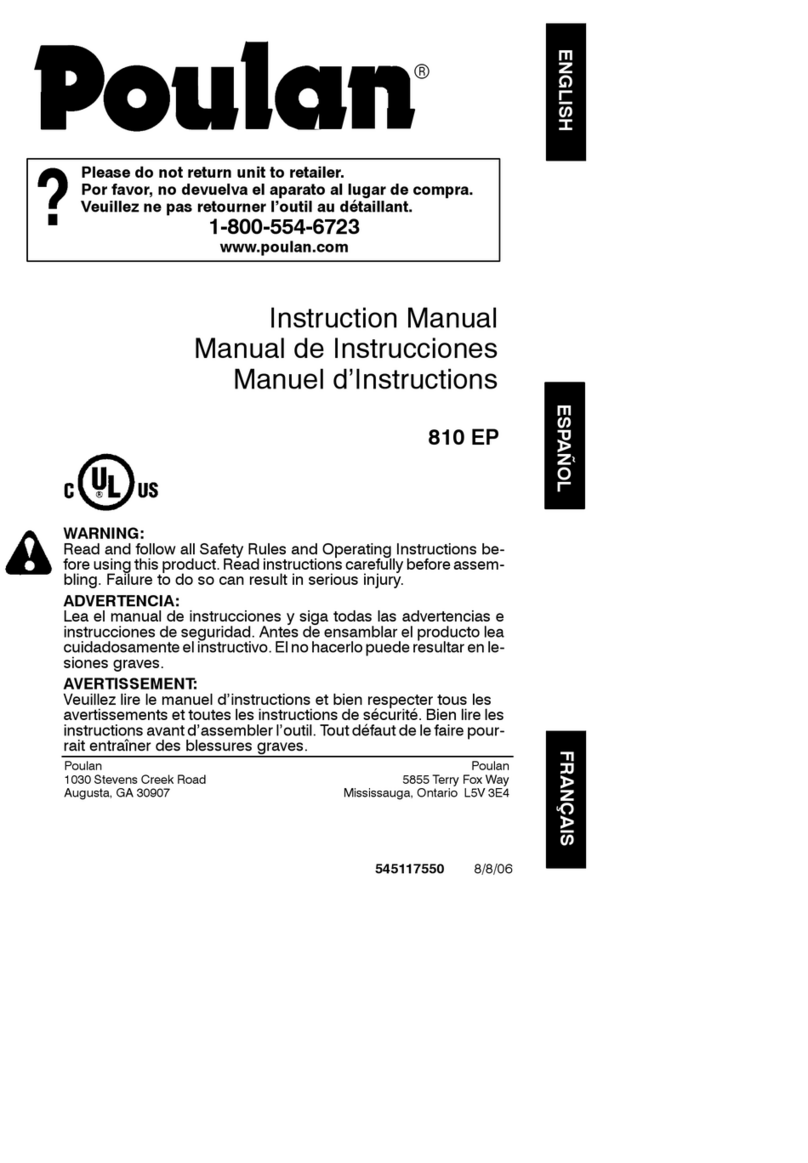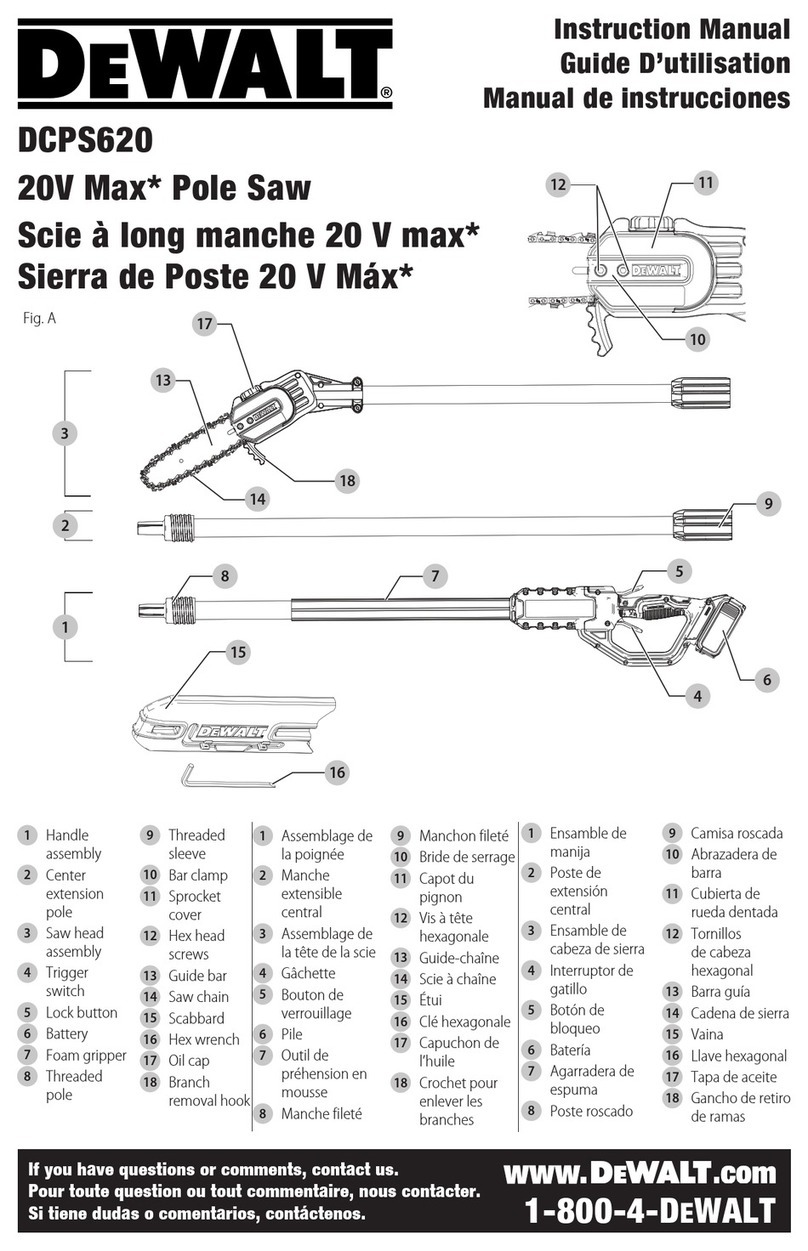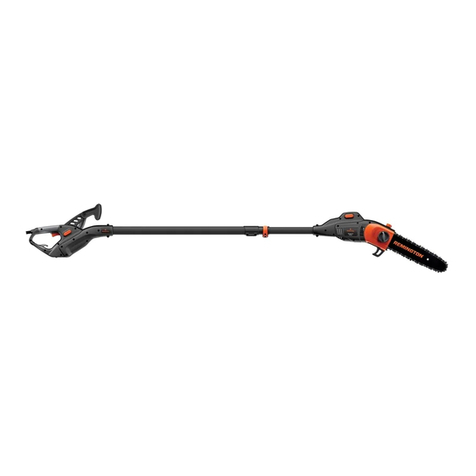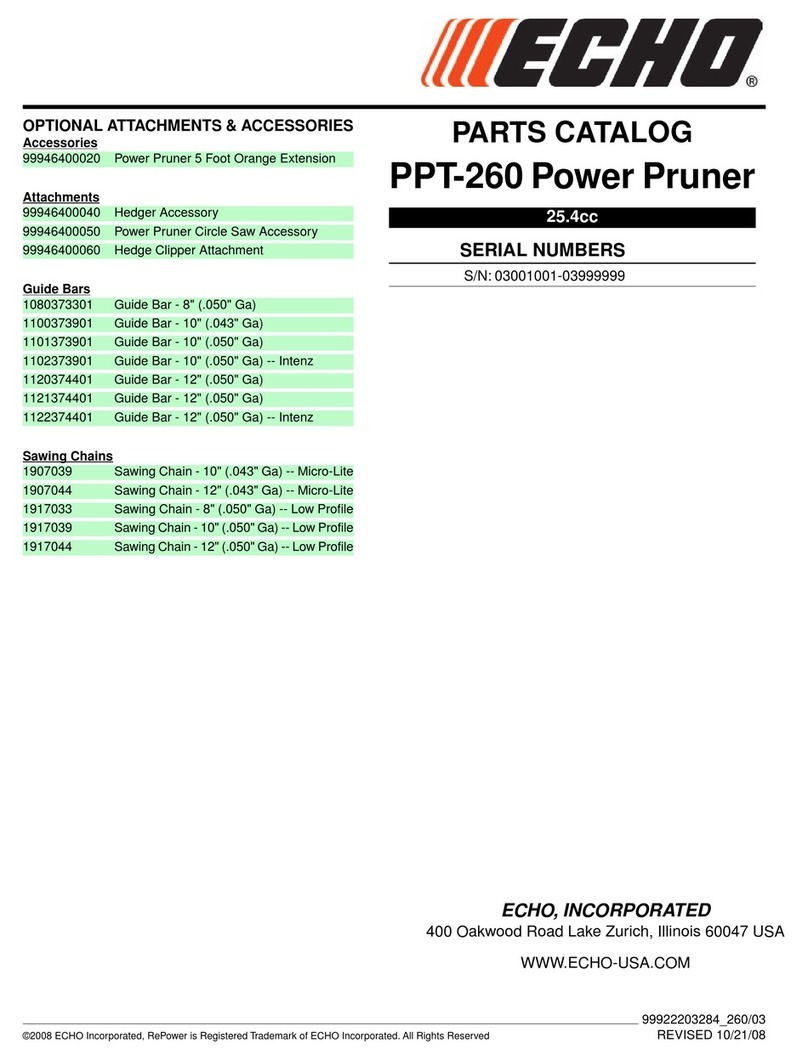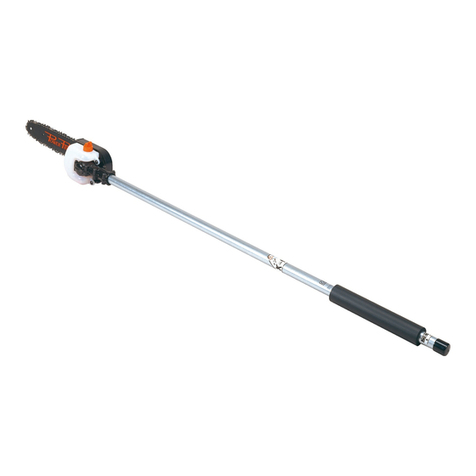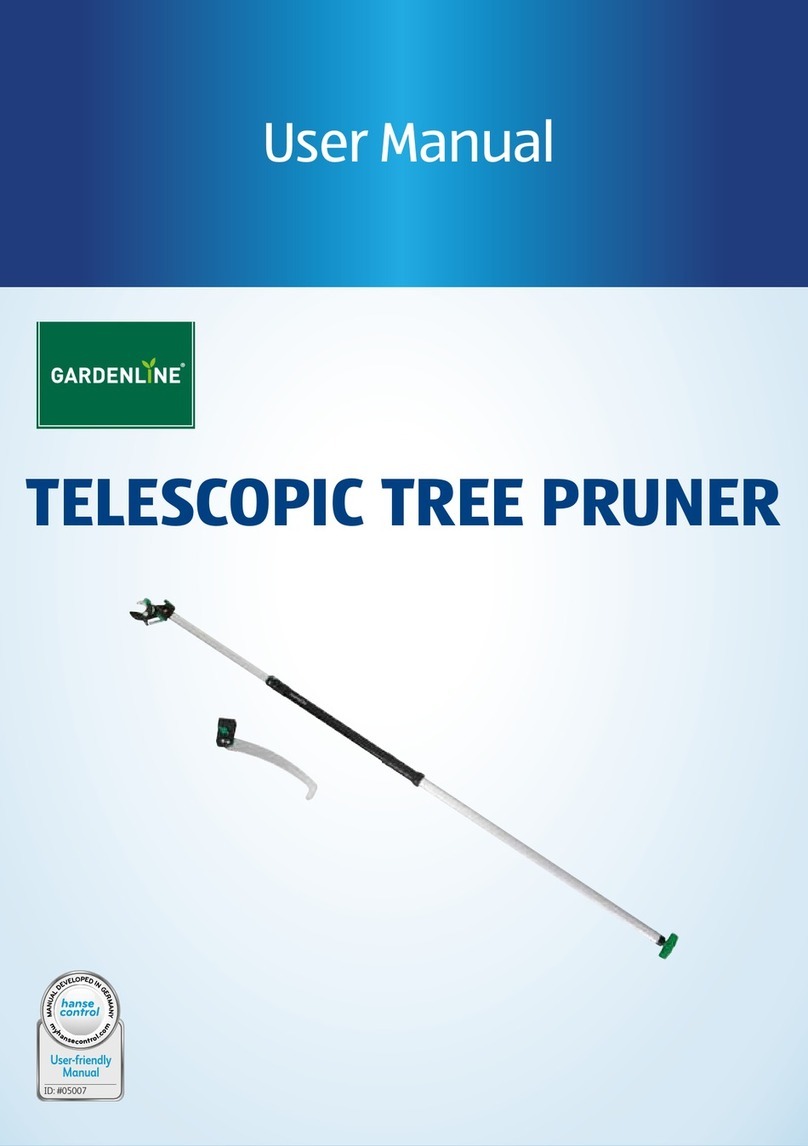2
Throughout this manual are special at-
tention statements.
DANGER!
A statement preceded by the trian-
gular attention symbol and the word
“DANGER” indicates an imminently
hazardous situation which, if not
avoided, WILL result in death or seri-
ous injury!
WARNING!
A statement preceded by the trian-
gular attention symbol and the word
“WARNING” indicates a potentially
hazardous situation which, if not
avoided, COULD result in death or
serious injury.
CAUTION!
A statement preceded by the word
“CAUTION” contains information that
should be acted upon to avoid dam-
age to the machine.
IMPORTANT!
A statement preceded by the word
“IMPORTANT” is one that possesses
special signicance.
NOTE:
A statement preceded by the word
“NOTE” contains information that is handy
to know and may make your job easier.
Attention Statements
Introduction Safety Precautions
Read and follow this manual, make sure
anyone using the trimmer does likewise.
Failure to do so could result in serious
personal injury or machine failure. Keep
this manual for future reference.
Always wear a hard hat to reduce the risk
of head injuries during operation of this
machine.
In addition, always wear eye and hearing
protection. Shindaiwa recommends wearing
a face shield as additional face and eye
protection.
Wear heavy duty, non-slip gloves.
Safety tip shoes or boots with non-slip
sole should be worn.
The Shindaiwa Pole Pruner Attachment
is designed and built to deliver superior
performance and reliability without
compromise to quality, comfort, safety or
durability.
As an owner/operator, you'll soon
discover for yourself why Shindaiwa is
simply in a class by itself!
While every attempt has been made to
provide the latest information about your
Shindaiwa product, there may be some
differences between your attach- ment
and what is described here. Echo, Inc.
reserves the right to make changes
to products without prior notice and
without obligation to make alterations to
components previously manufactured.
The procedures described in this manual
are intended to help you get the most
from your machine as well as to protect
you and others from harm. These pro-
cedures are guidelines for safe opera-
tion under most conditions, and are not
intended to replace any safety rules and/
or laws that may be in force in your area.
If you have questions regarding your
power tool, or if you do not under-
stand something in this manual, your
Shindaiwa dealer will be glad to assist
you.
You may also contact Shindaiwa at the
address printed on the back of this
manual.
NOTE:
For specic maintenance and safety infor-
mation about your T230/231, AH230/231,
or PB230, consult the owner's manual
provided with it. If it has been lost or
misplaced, contact a Shindaiwa dealer for
a replacement.
WARNING!
THE PRUNER IS NOT INSULATED
AGAINST ELECTRICAL SHOCK!
Approaching or contacting electrical
line with the pruner could cause
death or serious injury. Keep the
pruner at least 33 feet (10 meters)
away from electrical lines or branch-
es that contact electrical lines.
IMPORTANT!
The information contained in these
instructions describes components
available at the time of publication.
PAGE
Contents
WARNING!
A pole pruner runs at very high
speeds and has the potential to do
serious damage if misused, abused
or mishandled. To reduce the risk
of injury, you must maintain control
at all times, and observe all safety
precautions during operation. Never
permit a person without train-
ing or instruction to operate this
pruner!
Introduction ............................................ 2
Attention Statements ............................. 2
Safety Precautions.................................. 2
Operating Precautions .......................... 3
Safety Labels........................................... 4
Operating the Pruner ............................ 4
Product Description............................... 5
Specifications.......................................... 6
Assembly............................................... ..6
Filling the Chain Oiler Reservoir ......... 8
Maintenance ........................................... 9
Sharpening the Chain ......................... 10
Troubleshooting Guide ....................... 12
This product conducts electricity. Keep
the product and/or operator a minimum
distance of 15 feet (4.5 meters) away
from electrical sources and power lines.
Keep bystanders at least 50 feet (15 me-
ters) away from the operating trimmer
to reduce the risk of being struck by
falling objects or thrown debris.
The blades / cutting attachments are
SHARP! Handle with care.
Be aware of the danger of falling debris.
Beware of pinching.
Pinching the saw along the tip of the
guide bar may force the bar back
rapidly toward the operator. Pinching
can occur whenever wood closes in
around the moving chain.
Beware of Kickback!
Kickback can occur whenever the
tip of the guide bar touches an object
while the saw is operating. Kickback
may force the bar up and back
toward the operator with lightning-
like speed!
Never operate power equipment of any
kind if you are tired or if you are under
the inuence of alcohol, drugs, medica-
tion or any other substance that could
affect your ability or judgement.


